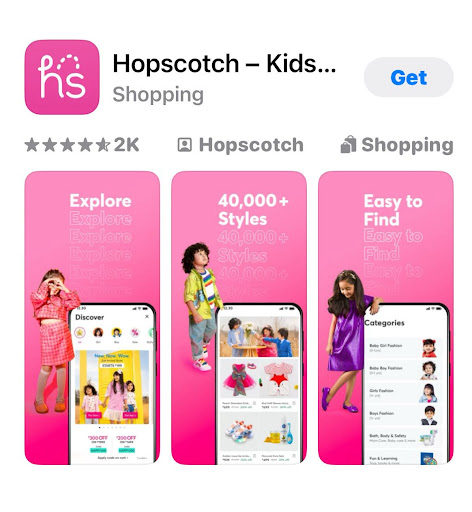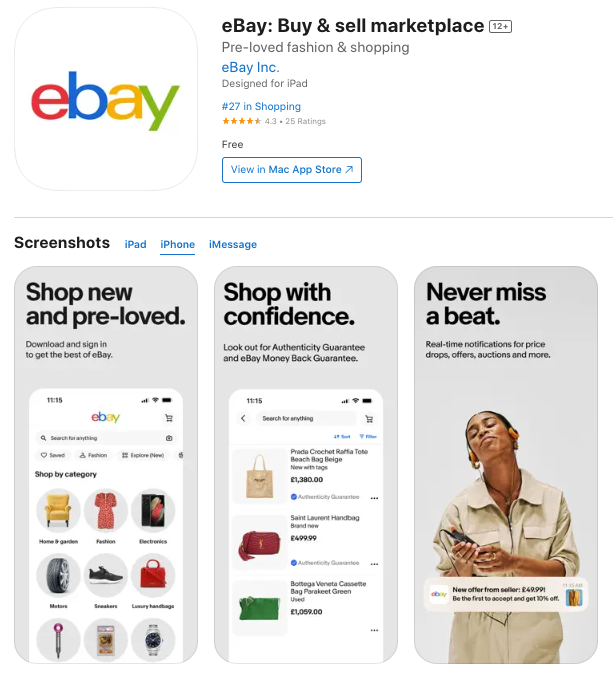
Finding the Right Rhythm in ASO with Musixmatch
Posted on March 27th, 2025
This week, we explore how Musixmatch can update its ASO strategy to improve App Store search rankings, enhance visuals, and drive more downloads.

Back to school season is upon us as September approaches. Parents, teachers and kids are preparing for a new school year, looking for supplies and clothes they need for the year ahead. Around this time of year, major retailers ramp up their advertisements and promotions around this time of year.
In this spotlight we highlight a couple apps we found via searching the iOS Store, and some missed app promotion opportunities via Google Search.
Let’s begin with the missed opportunities.
When searching for school supplies in Google’s search engine on mobile web, you may find the following results from Walmart and Target:


When clicking either of these search results, the user is immediately directed to the website version of the school supplies landing page.
In a survey conducted by Heady.io, nearly 60% of consumers prefer to shop in mobile apps than any other channel, including the web. This opens up an important tactic for mobile marketing: Deep linking. BothWalmart and Target should give the option of opening or directing the users to the app stores to download the app when they click on the search result.
Apps are designed specifically to enhance the user experience for mobile users. When we have the ability to recognize if a user is on a desktop or mobile device, our advertising should account for that.
When you search for “school supplies” on the App Store, you’d hope to find the same major retailers you see on the web. A quick search for “school supplies” within the iOS App Store, you’ll see an Apple Search Ad display, and Office Depot as the organic #1 ranking. What we have below is Shein, an international fashion retailer within the Search Ad.

While technically not a traditional school supplier, Shein does offer clothing for elementary school, high school, and college students. With the available items to buy, they are likely targeting “school supplies” related keywords within their Search Ads campaign, allowing them to be served for the term.
This is a great example of cross-marketing in a category that an App Store browser may not have been thinking about when searching for school supplies, but now it’s caught their eye.
The first screenshot by Shein is optimized well, with a large font, major sale highlighted, and demographically appropriate models. However, for a search term like “school supplies”, Shein misses the mark with screenshots #2 and #3, both of which have almost nothing to do with school.
What could Shein promote instead of those screenshots to gather a larger audience?
Even if it’s seasonal, another strategy that Shein could use is with Custom Product Pages. This would allow them to custom tailor their website for any Back to School campaigns they’re running on the web, and tie it to Back to School related terms on Apple Search Ads.
An app called Hopscotch, a kids clothing store, has a great way to attract a parent’s eye that may be browsing for items for their child. Their large font, variety of items and UI display could lend themselves to converting more users at the “back to school” search level.


Office Depot ranks #1 organically for “school supplies” iOS App Store as of today. Given that Office Depot placed “school” in their subtitle, Office Depot would benefit from dedicating one of the first three screenshots to school supplies, especially now that we are in the peak of back-to-school season.
The company is also using a redundant term in their title and subtitle: “office.” Redundancy in iOS metadata does not help rankings but. actually limits app visibility. Instead, Office Depot could replace “Buy office” in their subtitle with “Buy workplace.” This would expand their overall keyword reach.

Despite ranking at #3, Discount School Supply has a lot of open opportunities to optimize. As “school supplies” picks up in volume in the App Store for Back to School season, they may not convert as many users are they could in the iOS App Store.
Starting with the title and subtitle, what Discount Shool Supply lists is their Title but within the Subtitle as well.This severely limits the scope of keywords that this app can rank for. As we’ve mentioned before, duplication of keywords doesn’t fool the iOS App Store. Its algorithm rewards a diversification of keywords with more keyword rankings.
A better title and subtitle may be:
This allows the app to now rank for additional relevant keywords, relevant within the overall vertical they fall within.
As far as the screenshots are concerned, the screenshots themselves are purely just UI taken from the app without any copy or context. They include a video highlighting overall usage, which is great, but their screenshots almost show nothing about the app. A user is left to assume many things about the retailer, all of which may not be accurate. Ideally, Discount School Supply would display something with large text at the top, minimal words, even emphasize some portions of the UI to draw user attention.
This is best exemplified by the eBay app preview:

To take advantage of this back-to-school period–whether it’s Amazon, Target, or Walmart– app developers and marketers could:
Even if an app is not necessarily impacted by seasonal trends, adhering to current seasonality (where relevant) can lead to increased conversion rates over time.

This week, we explore how Musixmatch can update its ASO strategy to improve App Store search rankings, enhance visuals, and drive more downloads.

Discover how 23andMe can enhance its App Store presence with strategic ASO tweaks, and learn key ASO tips to boost visibility and conversion rates.

This App Store Spotlight on theScore explores title, subtitle, and screenshot optimizations to boost visibility and conversions during March Madness and beyond.